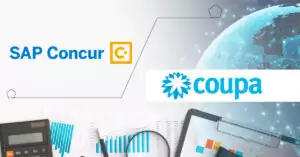We are in fourth decade of ‘Managed Services’ business practice, which is widely adopted by several business enterprises irrespective of size. If we consider the deal between Eastman Kodak and IBM for setting up and managing Data Center by IBM for Eastman Kodak, it can be called as Managed Services 1.0.
Then evolved managed services of managing IT infrastructure was further matured by enterprises like IBM, EDS and so on. This model was prevalent almost till end of last millennium, till such time Y2K kept all IT business houses busier.
Then came Internet revolution and India based Software enterprises offered more competitive offering through offshore managed service delivery model.
Over the years, business enterprises that were outsourcing IT services learned the nuances of deal and challenges. To further optimize the cost, several of them experimented with a captive center in a low-cost location and operated such unit as extended arm of their in-house IT operations. The outcome of such experimentation was mixed. Some success stories a few failures. This transformation of offshoring and setting up captive centers can be called as Managed Services 2.0.
Over past decade, several changes and transformation have made information technology totally different from the past, with the result the new era of Managed Services 3.0 has dawned in this decade.
Several changes have contributed to current state include technological changes, business modeling, global economic changes, generation changes consequently social changes and of course, COVID19 pandemic. This blog post discusses the critical factors that enterprises must consider while choosing a partner for Managed Service 3.0
Automation
Automation is one of the major change in information technology in the past decade. Automation technologies were deployed across all functions of most of the business enterprises that adopted automation. Bot, Machine Learning (ML) are deployed and in certain cases cognitive computing platforms ( may be called as Artificial Intelligence (AI)) were also leveraged by enterprises. Automation is implemented in managing Data Centers and IT Operations and popularly known as AI Operations.
Most the enterprises have automated their data center operations, using some platform. When a Managed Services engagement is due for renewal, one of the critical decision point will be how to migrate Automation platform and it is not easy to migrate all automation uses cases over short period. The enterprises considering change of Managed Service Provider (who also has deployed Managed Service Provider(MSP)’s own automation platform), need to plan their managed services RFP at least a year ahead of expiry of existing managed services contract. Automation of cloud environment is also equally important, such automation is implemented using incumbent MSP automation platform.
Managed Services 2.0 did not have Automation as a component.
Cloud Computing
Cloud computing is another important technological advancement that was embraced by many enterprises. There are two components of cloud computing that an enterprise needs to consider when finalizing an MSP. First is the technology competence of the MSP in managing cloud (invariably multi-cloud as this is more prevalent) IT environment of enterprise and secondly, cost optimization without compromising quality and performance of cloud environment. In addition, the need will be to manage small data centers or data closets of the enterprise.
Cloud computing is relatively new phenomenon which was nonexistence during period of Managed Services 2.0.
Realtime Analytics
Most of the competitive industries such as retail, banking, telecom, insurance, Healthcare, life science, pharma industries, that has intensive transaction data generation need extensive analytics capabilities and several industry needs continuous analytical view for their decision making. Thus the Realtime analytics is gaining significant importance. Managing Realtime analytics environment calls for capability of managing complex infrastructure, complex data flow architecture, cloud computing environment with data lakes and flaw less uninterrupted Realtime analytics dashboards / reports. These are relatively new concepts, that were not needed during the Managed Services 2.0.
SaaS Applications
More and more business functions started evaluating IT solutions and applications that are user friendly, no code / low code, serverless. Recognizing this need almost every independent software vendor of yesteryears now offering Software as a Service (popularly known as SaaS Applications. As business functions prefer SaaS solutions, there are two things critically emerge. One knowledge of MSP to support SaaS application with respect to customization and secondly, ability to integrate individual SaaS applications with other enterprise applications.
SaaS was not something very common during Managed Services 2.0
Integration
During Managed Services 2.0 era, integration was predominantly integrating various enterprise application and in certain cases B2B application integration. In the current era of Managed Services 3.0 integration gains significant importance in the context of (1) multi-cloud integration (2) hybrid Cloud environment integrations (3) SaaS integration with other application on cloud / data center, besides B2B integration is also important. In addition to integration platform as a service (IPAAS)) is gaining significant importance. Certain IPAAS solution provider such as Workato, Dell Boomi offers business user friendly integration solution building. User will demand support for such self-service platform solution. These are all very new unlike times of Managed Services 2.0.
Reducing Technology Debt
Technology debt refers to ongoing maintenance cost of old technology solution, even after updates the solution features are less than optimal. There are several enterprises that were indecisive in investing in new technology or upgrade systems to current version, eventually got trapped into old solution, with disproportionately high maintenance cost, continue to operate on a less optimal technology solutions.
As changes are happening very fast, there is a need for every enterprise to take stock of their technology debt and reduce the debt before embarking on renewal of managed services engagement.
Reducing technology debt is easier said than done, as it involves considerable investment sometimes capital spend. Technology debt is very high in current era of Managed Services 3.0 compared to previous eras of Managed Services 1.0 and Managed Services 2.0. This is primarily because of rate of change that is happening technology space now is significantly more rapid than in the past.
IT Roadmap Execution
In the past vendors from information technology used to have product roadmap in the past. Nowadays CIOs of every enterprise started having IT Roadmap for IT organization of their respective enterprise. This is primarily driven by business needs coupled with attempt to reduce technology debt. Understanding IT Roadmap and timing Managed Services engagement renewal is critical. Besides, there is a strong need for new managed services provider to help in realizing targeted goal. Again, as the rate of change is much faster than that of past, this is something new for Managed Services 3.0 unlike the past.
Business KPIs and Business SLA
The new generation business leaders demand business justification for every spend, including IT spend. It is also a realization over the years, traditional Managed Services SLA such as “Response time” and “Resolution time”, “MTTR” are for optimizing IT function and does not have relation to business outcome of IT spend.
In the current era of Managed Services 3.0 business leaders demand direct correlation between IT spend and business outcome. With the result, Business KPIs and Business SLAs are now become part of Managed Services 3.0 engagement. These are in addition to traditional IT operations SLAs.
Selecting the most compatible partner
With the above detailed factors, selecting a Managed Services vendor just a few months before expiry date engagement is no longer feasible It requires lots of preparation time much ahead of embarking on RFP process. RFP process cannot be just run of the mill process as it was in the past. Aevitas IT can help enterprises in getting ready for Managed Services 3.0. Aevitas IT in depth experience in Managed Services 3.0 RFP by leading and managing the entire RFP program for its clients.
Assessment
Given the above listed differences between current era of Managed Services approach with the past versions and to seize the opportunity of newer way of managing the IT environment, Aevitas IT believes that every enterprise must do an assessment of one’s on state of IT setup and plan next steps in embracing Managed Services 3.0.
The enterprises may choose to do such assessment internally with their own available resources or can engage an expert who can help with out of the box perspectives and expertise.
Aevitas IT can help enterprises in getting best value in current Managed Services 3.0 era with Its industry expertise, proprietary methodology, all collaterals / templates for assessment, planning RFI, RFP and collaborative approach with procurement and legal functions of client enterprises.
Authored by: Srinivasan M K (Srinivasan is part of Strategic, Senior Leadership team of Aevitas IT LLC)



